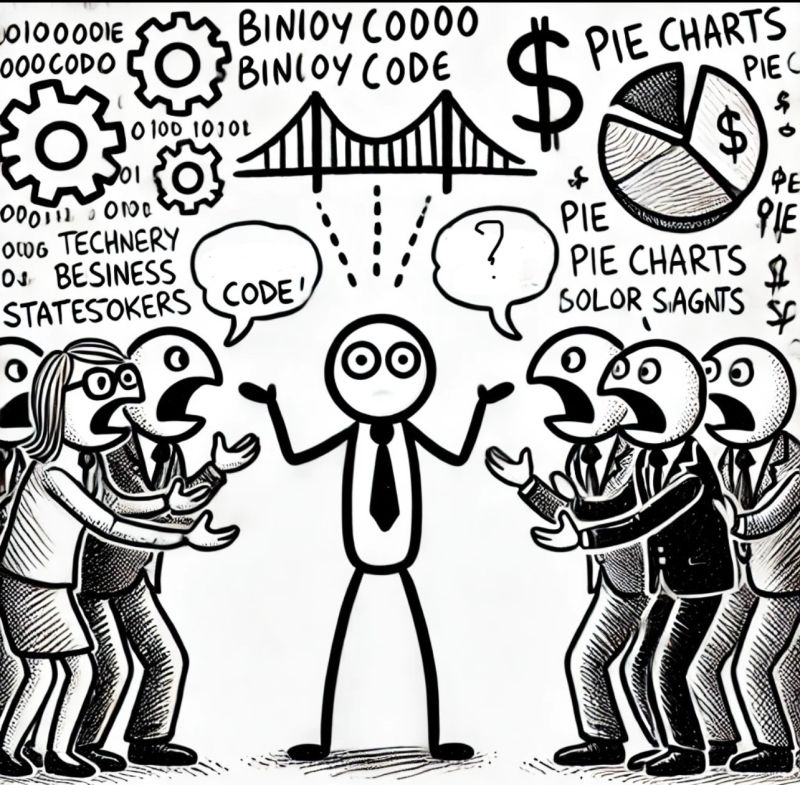In technical leadership, it’s tempting to wait until everything is flawless before moving forward. But I’ve learned that progress is better than perfection. Small, consistent steps create momentum—and momentum builds success.
Here’s how I’ve embraced this mindset:
• Start with what you have: Waiting for ideal conditions often means missed opportunities. Focus on what’s achievable now.
• Iterate often: Treat everything as a draft. Learn, adjust, and improve as you go.
• Celebrate progress: Acknowledge even the smallest wins—they’re stepping stones to bigger achievements.
Category / Uncategorized
The Value of Saying “I Don’t Know”
In technical leadership, there’s a common misconception that you need to have all the answers. But some of the best breakthroughs in my career have come from three simple words: “I don’t know.”
Here’s why:
- It builds trust: Admitting you don’t know something shows honesty and humility, making teams more willing to collaborate.
- It sparks curiosity: “I don’t know” is often the start of discovery. It opens the door to learning and problem-solving together.
- It empowers others: By acknowledging gaps in your knowledge, you create space for others to step up and contribute.
No one expects you to know everything. What matters is how you approach the unknown—with curiosity, teamwork, and a mindset of growth.
What’s the most impactful “I don’t know” moment you’ve had in your career? Let’s share and learn together!
Learn to Speak Two Languages…
One of the most valuable skills I’ve developed as a TPM is the ability to act as a translator—not between English and another spoken language, but between technical teams and business stakeholders.
Engineers speak in APIs, algorithms, and code. Stakeholders talk in timelines, KPIs, and outcomes. The magic happens when you can fluently move between these worlds, ensuring everyone feels heard and aligned.
Here’s how I approach it:
• Ask questions relentlessly: Don’t assume you understand; dig into both technical and business nuances.
• Simplify without oversimplifying: Translate complex technical details into language that connects to business value without losing accuracy.
• Provide context both ways: Engineers need to know why their work matters. Stakeholders need clarity on constraints and trade-offs.
Bridging these two languages creates trust, alignment, and better decisions. How do you balance these perspectives in your role?

Focus on Impact, Not Just Output
In technical roles, it’s easy to measure success by the number of tasks completed, code shipped, or meetings attended. But real value comes from understanding and driving impact.
As a TPM, I’ve seen firsthand how focusing on impact shifts priorities. Instead of asking, What do we need to build next?, I ask, What problem are we solving, and how does this move the needle?
Here’s how I keep impact front and center:
-Start with the “why”: Ensure every project has a clear purpose tied to broader goals.
-Prioritize outcomes over outputs: It’s not about delivering more; it’s about delivering what matters.
-Celebrate small wins: Acknowledging progress reinforces the connection between effort and impact.
Focusing on impact not only improves results but also motivates teams by showing them the value of their contributions. How do you measure and communicate impact in your work?
The Power of Context
One of the most underrated skills in technical roles isn’t about coding, data, or engineering—it’s about providing context.
As a TPM, I’ve learned that context is the bridge between action and impact. Engineers need to know why a project matters. Stakeholders need clarity on how their goals align with the team’s work. Without context, even the best plans can feel like tasks on a checklist.
For example, when I oversee machine learning compute deployments, the technical details are complex, but the story is simple: we’re enabling innovation. Framing work in this way shifts conversations from execution to impact.
The next time you’re planning a project, ask yourself:
- Does everyone know why this work matters?
- Have I tied the technical details to the broader goals?
- Am I equipping others to make informed decisions?
In technical leadership, delivering context is as crucial as delivering results.
Embracing the Uncomfortable
Every career growth story has a recurring theme: discomfort. Not the kind of discomfort that pushes you away, but the kind that challenges you to lean in and adapt. For me, every significant shift in my career—from data analyst to data engineer to TPM—required stepping into roles I wasn’t fully prepared for.
As a data analyst, I was hesitant to transition to engineering because I didn’t have a formal coding background. But I chose to lean into my curiosity, and in doing so, I built systems that didn’t just analyze data but powered scalable solutions.
Later, as I transitioned into technical program management, I faced new challenges: aligning engineers, defining priorities, and navigating ambiguous problem spaces. None of this came naturally at first. It took listening, learning, and, yes, being uncomfortable.
Growth rarely happens in your comfort zone. The skills that matter most—adaptability, communication, resilience—are built by facing uncertainty head-on. So, when you feel that itch of discomfort, don’t run from it. It might just be the beginning of your next chapter.